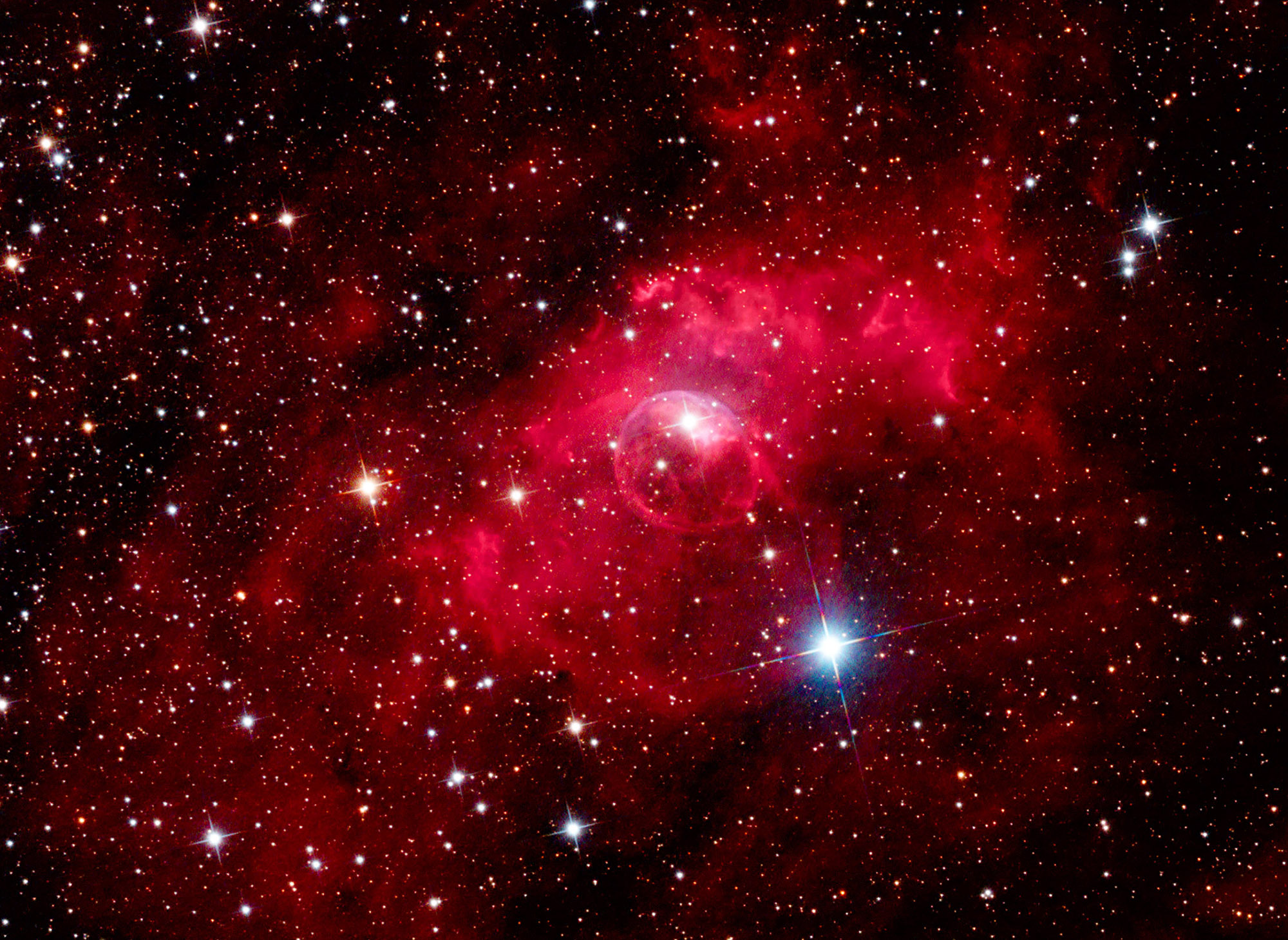NGC 7635 (Bubble nebula) in Cassiopeia
NGC 7635 is a large H II star-forming region composed largely of ionized hydrogen. It is also known as SH2-162 and contains a rounded bubble-like structure. At the top of the bubble is a bright star with a diffraction spike, SAO 20575. This is a massive 0-spectral star that is 45 times larger than the Sun and is hundreds of thousands times more luminous. It is producing stellar winds traveling outward at 4 million miles per hour that are colliding with, compressing and heating surrounding, cool, interstellar gases. The bubble is eccentrically placed relative to the star because the wall closest to the star has much higher density of molecules than the opposite wall were interstellar gas is more readily propelled outward at the edge of the nebula. As surrounding gases are heated, those rich in oxygen emit blue light, whereas those richer in hydrogen emit predominantly red light. NGC 7635 is 7100 light years from the Sun, and the bubble is 7 light years in diameter.
The bright blue star to the lower right of the Bubble nebula is HIP 115198, a 6.94 magnitude B2IV blue subgiant star. It is 1664 light years from the Sun.
- Location/Date: Chiefland Astronomy Village FL, October 10, 2021
- Telescope: Astro-Tech 10" Ritchey Chretien with Astro-Tech AT2FF 2" Field Flattener
- Focuser: Moonlite CSL focuser and Hi Res Stepper Motor/Pegasus controller
- Camera/Filters: QHY268M with QHYCFW3M filter wheel / Astrodon LRGB filters and Chroma Ha and OIII filters (5nm)
- Guider: QHY off axis guider M; QHY-5L-II-M guide camera
- Mount: Astro-Physics 1100GTO
- Image Acquisition/Guiding Software: N.I.N.A./PHD2
- Image Processing: PixInsight 1.8.8-9; Photoshop CS6
- Captures: 200s subframes (2x2); RGB - 8 to 9 each. Ha and OIII - 15 to 16 each
|

